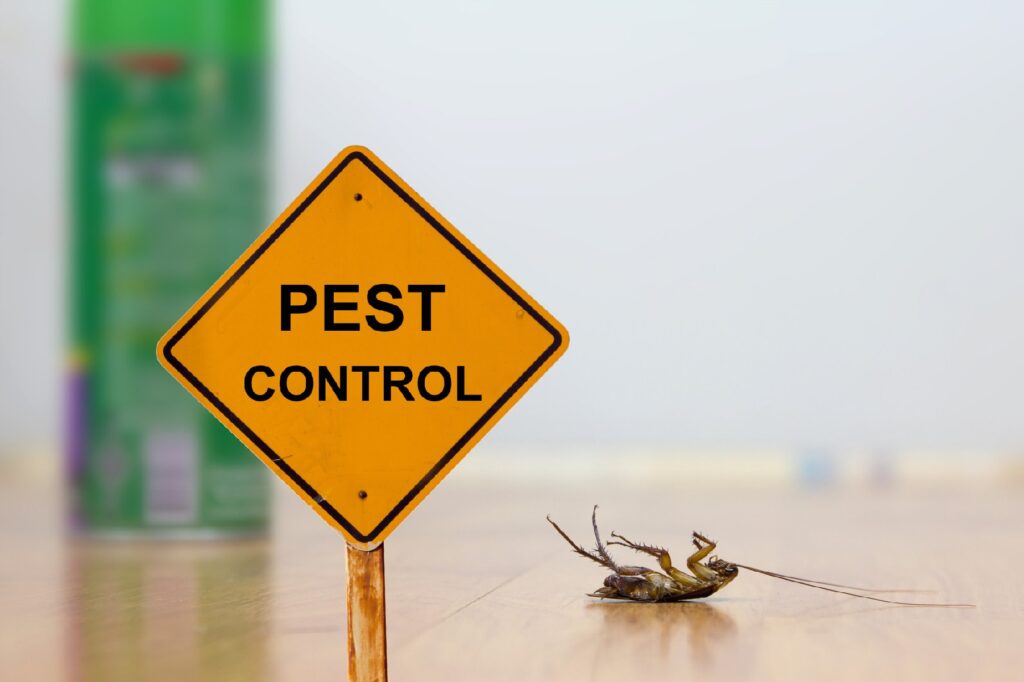A Comprehensive Guide to the Different Kinds Of Pest Control Methods
With the myriad of insect control approaches available, it can be frustrating to locate the most effective option for a certain parasite trouble. In this extensive overview, we will certainly check out these various kinds of insect control approaches, offering understandings right into their applications and benefits. By the end, you will have a more clear understanding of which approach may be the finest fit for your parasite control needs.
Chemical Bug Control Methods

One common kind of chemical insect control is insecticides. Insecticides are chemical compounds that are particularly created to eliminate or repel pests. They can be used in different types, such as sprays, baits, or dusts. Insecticides target particular insects, such as mosquitoes, termites, or ants, and can be used both indoors and outdoors.
Another kind of chemical bug control is rodenticides. These are chemical compounds created to regulate populaces of rats, such as rats and mice. Rodenticides are usually utilized in bait type, which attracts the rodents and after that eliminates them after ingestion. They are commonly made use of in agricultural settings, in addition to in property and industrial buildings (Customized pest control solutions Chicago).
Herbicide, also recognized as herbicides, are one more kind of chemical bug control method. Herbicides are made to precisely eliminate unwanted plants, called weeds, without triggering injury to desirable plants. They are commonly made use of in agriculture, landscape design, and gardening to control the development of unwanted plant life.
While chemical insect control approaches can be extremely effective in removing insects, it is very important to utilize them sensibly and adhere to safety standards. Overuse or misuse of chemical pesticides can have unfavorable influence on human wellness and the environment. It is critical to employ these approaches properly and take into consideration alternative bug control techniques whenever possible.
Organic Insect Control Techniques
Organic parasite control methods include using living microorganisms or natural substances to take care of and regulate pest populations. Unlike chemical methods, which commonly rely upon synthetic chemicals, organic control methods use the natural opponents of insects to regulate their populaces. This technique is thought about more ecologically pleasant and sustainable, as it minimizes using unsafe chemicals and lessens the threat of pesticide resistance.
One commonly used biological insect control technique is the introduction of all-natural killers or bloodsuckers. As an example, ladybugs are introduced to manage aphids, while specific wasp types are released to target caterpillars. These killers and bloodsuckers eat bugs, lowering their numbers and preventing infestations.
Another biological control technique is making use of microorganisms. Certain bacteria, viruses, and fungis can be employed to contaminate and eliminate specific parasites. The bacterium Bacillus thuringiensis is typically utilized to control caterpillars, as it produces contaminants that are dangerous to these bugs.
Biological control methods can also entail using scents or all-natural materials that interrupt the breeding patterns of pests. By disrupting their recreation, these techniques aid to lower pest populations over time.
While biological bug control techniques are typically reliable, they may call for longer periods to attain preferred results contrasted to chemical techniques. Additionally, mindful consideration should be offered to the choice and release of natural enemies to stop unintended harm to useful organisms or ecosystems.
Physical Bug Control Techniques
To efficiently take care of and regulate pest populaces, alternate pest control approaches known as physical bug control methods are utilized. These methods include the use of physical barriers, traps, or tools to avoid insects from accessing or harming building. One common physical bug control approach is using screens or nets to keep bugs out of structures or yards. These displays are generally constructed from great mesh material that enables air flow while avoiding bugs from entering. One more physical parasite control approach is the installation of fences or wall surfaces to keep bigger pests, such as deer or bunnies, out of gardens or agricultural areas. These barriers literally block the bugs' access to the location, reducing the capacity for damages. Furthermore, catches and devices can be made use of to capture or fend off bugs. For instance, sticky catches can be positioned in locations where bugs are a trouble, and the bugs come to be stayed with the adhesive surface. Ultrasonic gadgets can likewise be utilized to send out high-frequency sounds other that are unpleasant to insects, triggering them to leave the location. Physical insect control methods are an environmentally pleasant choice to chemical pesticides, as they do not depend on using hazardous chemicals.
Natural Insect Control Approaches
All-natural parasite control techniques use a lasting and environmentally friendly technique to handling and getting rid of bugs. One of the most typical natural insect control approaches is organic control. By adopting these all-natural parasite control techniques, people and communities can efficiently manage bugs while reducing the unfavorable effects on the environment and human wellness.
Integrated Bug Management (IPM)
Integrated Insect Monitoring (IPM) is an extensive and organized method to pest control that incorporates various methods and techniques to successfully manage insects while decreasing the usage of chemical pesticides. IPM aims to keep insect populaces below the financial injury degree by utilizing a mix of social, biological, and chemical control methods.
Cultural control approaches involve changing the environment to make it much less desirable for pests. This can include techniques such as plant rotation, appropriate hygiene, and the usage of resistant plant varieties. By producing undesirable problems for parasites, cultural control methods can significantly minimize parasite populations.

Chemical control methods are utilized as a last hope in IPM. They entail the targeted and wise use of chemicals to take care of pest populaces. Unlike standard insect control approaches, IPM aims to reduce using chemical pesticides by employing alternative methods.
Integrated Pest Management (IPM) is a proactive approach that concentrates on long-term insect management as opposed to counting solely on reactive procedures. By integrating several official site control techniques, IPM provides an extra sustainable and eco pleasant approach to pest control.
Verdict
Finally, this article has offered a comprehensive overview of the different kinds of insect control techniques. It reviewed chemical, biological, physical, and natural bug click here to find out more control methods, as well as the integrated parasite administration approach. By comprehending these different approaches, people can make educated decisions on which parasite control method is most suitable for their certain needs and preferences. Reliable bug control is vital in keeping a healthy and pest-free setting.